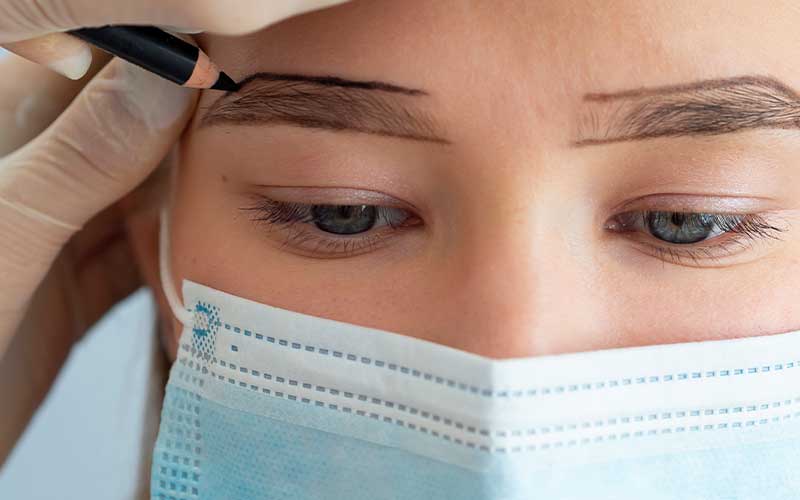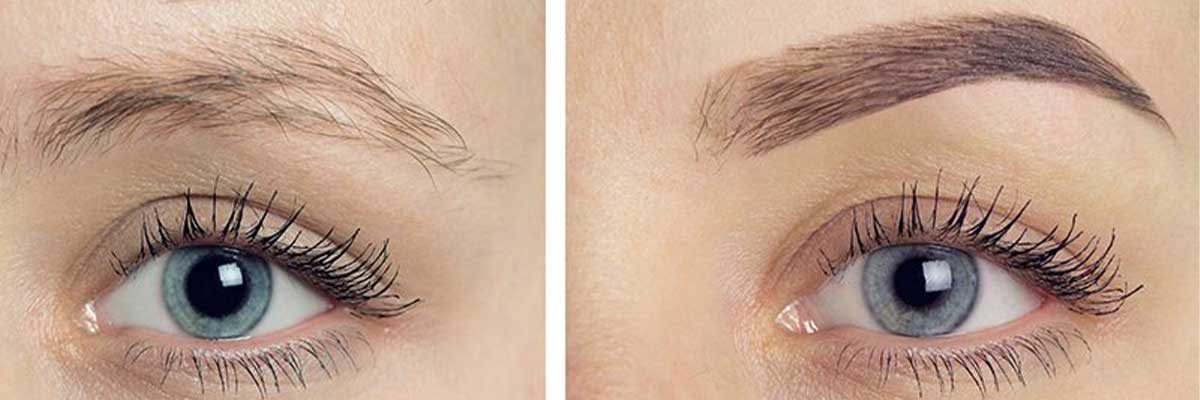Free Consultation Form
Eyebrow, moustache and beard transplantation is performed similarly to hair transplantation. Healthy hair follicles taken from the back of the head (nape area) are transplanted to the area where eyebrow, moustache or beard transplantation will be performed with special techniques. In this way, natural-looking and permanent hairs are obtained.
WHY CHOOSE INVICTUS HEALTH ADVISOR
Eyebrow, moustache and beard transplantation is an aesthetic surgery method that has gained popularity in recent years and helps people increase their self-confidence by making their facial features more distinct. This procedure aims to restore eyebrows, moustaches and beards that are sparse or absent from birth, lost as a result of accidents or diseases, or thinned with aging.
 Why Are Eyebrow, Moustache and Beard Transplantation Performed?
Why Are Eyebrow, Moustache and Beard Transplantation Performed?
- Eyebrows, moustaches or beards that are sparse or absent from birth: People whose eyebrows, moustaches or beards do not grow at all or are very sparse due to genetic factors can achieve a fuller appearance with this method.
- Losses caused by accidents or diseases: Transplantation is an effective solution for people who have lost their eyebrows, moustaches or beards as a result of burns, injuries or some diseases.
- Thinning due to aging: Thinning or graying of eyebrows, moustaches and beards with age is a common condition. A younger and more vibrant appearance can be achieved with transplantation.
- Aesthetic concerns: People who want to make their facial features more balanced and symmetrical can also prefer transplantation.
How is Eyebrow, Moustache and Beard Transplantation Performed?
- Consultation: Before the procedure, a specialist doctor is consulted and the person’s expectations and current condition are evaluated.
- Removal of hair follicles: Hair follicles are taken from the back of the head with FUE (Follicular Unit Extraction) or FUT (Follicular Unit Transplantation) methods. The FUE method is preferred more often because it leaves fewer scars.
- Opening the channels: Channels are opened with the help of fine-tipped pens in the area where the hair follicles will be transplanted.
- Transplantation of hair follicles: The hair follicles taken are placed one by one in the opened channels.
- After the procedure: Since the transplantation procedure is usually performed under local anesthesia, the patient can return to their daily lives in a short time after the procedure.
Process After Eyebrow, Moustache and Beard Transplantation
- Recovery: There may be slight redness, swelling and crusting in the transplanted area. This condition usually goes away on its own within a few days.
- Shedding and growth of hair: The transplanted hairs start to fall out approximately 2-3 weeks after the transplant. This is normal and is a sign of new hair growth.
- Growth of new hairs: New hairs start to grow in the place of the shed hairs approximately 3-4 months later. The period for the hairs to grow completely is approximately 12-18 months.
Advantages of Eyebrow, Moustache and Beard Transplantation
- Natural appearance: The transplanted hairs have a natural appearance like your own hairs.
- Permanent result: The transplanted hairs are permanent for a lifetime.
- A painless and safe procedure: Since it is performed under local anesthesia, no pain is felt during the procedure.
- Short recovery period: You can return to your daily life in a short time after the procedure.
Eyebrow, moustache and beard transplantation is an effective method that helps people feel better about themselves and increase their self-confidence. However, it is important to consult a specialist doctor and do detailed research before having this procedure.
Eyebrow, Moustache and Beard Transplantation Operation Overview
Let’s Plan Your Treatment Together in Turkey
PLAN YOUR TREATMENT IN TURKEY
Let us share with you how this magnificent transformation adventure, which begins from the moment you meet us, works.
ONLINE MEETING
VIP TRANSFER
We welcome you at the airport and bring you to our clinic safely in private vehicles.
YOU ARE OUR GUEST
We offer hotel accommodation during your treatment stay.
TREATMENT
Your doctor will create a plan. Surgery takes 3-4 hours, followed by a 1-night stay. After a final check-up, you’ll be discharged.
INTERPRETER SUPPORT
Enjoy healthcare in your own language with interpreter support before, during, and after treatment.
Free Consultation Form
Frequently Asked Questions About Eyebrow, Moustache and Beard Transplantation!
Beard and moustache transplantation is a surgical procedure that provides a thicker and fuller appearance by adding hair follicles to sparse or completely shed beard and moustache areas.
Men who experience hair loss or thinning in their moustache and mustache.
Those who do not grow beard and moustache due to genetic reasons.
People who experience losses in the beard and moustache area due to scars or wounds on the face.
The most common methods are FUE (Follicular Unit Extraction) and DHI (Direct Hair Implantation). While hair follicles are taken from the donor area in FUE and transplanted, direct transplantation is performed with a special pen in DHI.
There may be mild to moderate pain and discomfort after surgery, which usually subsides within 1-2 weeks. Painkillers recommended by your doctor may be used.
Yes, the transplanted roots usually provide a natural appearance. FUE and DHI techniques aim to transplant directly in a natural way.
The recovery process varies depending on the person, but crusting and swelling usually pass within 7-10 days. Full results are seen within 6-12 months.
You should not shave for the first few weeks. You can shave after a certain period of time during the recovery process upon the doctor’s recommendation.
Yes, the transplanted hair roots are usually permanent for life. However, there may be a certain amount of shedding according to the natural hair cycle, this is normal.
Swelling and bruising
Wound healing problems
Risk of infection
However, the risk of complications is very low in procedures performed by a specialist doctor.
Insufficient donor area (people who have genetically very little hair)
Those with serious skin diseases
Pregnant and breastfeeding women.
The transplanted roots start to fall out within 2-3 weeks, but new hair growth usually starts after 3-6 months and the full result is seen within 6-12 months.
During the post-operative recovery process, gentle cleaning and necessary care for wound healing should be done as recommended by the doctor. It is recommended to use shampoo and avoid contact with extremely hot water.
Avoiding heavy sports, not smoking and limiting alcohol consumption in the first weeks of the transplant will contribute to the healing process.
It is generally considered suitable for men aged 25 and over, but this may vary depending on the person’s skin structure and genetic factors.
We Continue to Be a Secure Bridge Between You and Turkey!

In order to ensure reliability in health tourism, the Turkish Ministry of Health requires intermediary service organisations such as us and health institutions to fulfil certain competence criteria. Organisations that can fulfil these criteria are entitled to receive the International Health Tourism Authorisation Certificate and prove that they are a reliable organisation in the sector.

 Why Are Eyebrow, Moustache and Beard Transplantation Performed?
Why Are Eyebrow, Moustache and Beard Transplantation Performed?